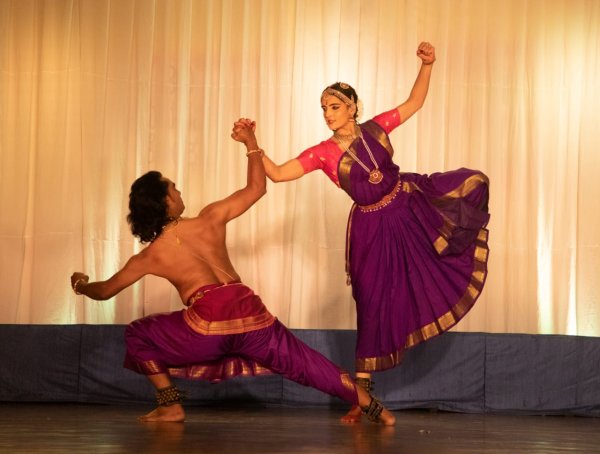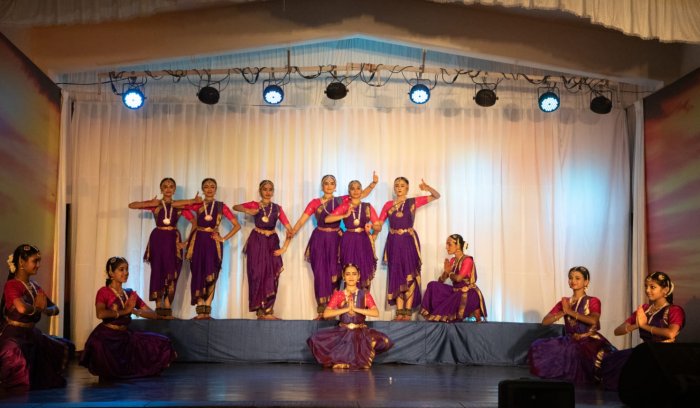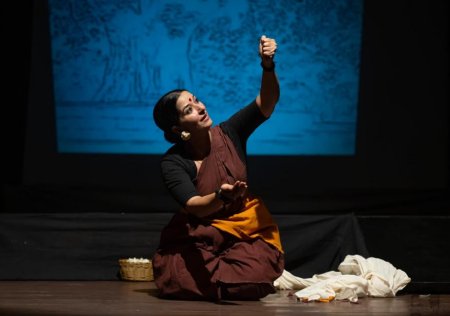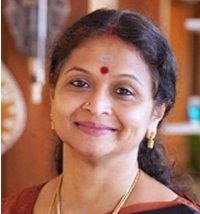
|   |

|   |
Rama Katha and Janaki - Two performances that reflected an ethos - Dr.Padmaja Suresh e-mail: padmajasuresh@hotmail.com May 10, 2023 Rama Katha Sudha was staged in a simple set-up, curated by Sri Vani Vidya Kendra in Bangalore on the 28th of April. Minal Prabhu, an alumna of the famed Kalakshetra, proved her ability to be a Guru to reckon with, once again. Bearing not only a stamp of the productions belonging to her alma mater, she also strives towards creating her choreographies with an added vision.  This performance initially saw a batch of upcoming students, a few of them displaying their newly acquired skills among their counterparts, who seemed tried and tested. They performed a Mallari, an Ekashloki by Adi Kavi Valmiki and the popular Todayamangalam - Jayajanaki of Annamayya. In the song Ramanadu Udbhavinchinadu in ragam Janjuti composed by Prayaga Rangadasa, there was a unique reference to the astrological charts coinciding with the auspicious birth of the Lord. The sweet melody of Thumaka chalata Ramachandra of Goswami Tulsidas was well-matched by mother Kaushalya while Marukelara brought out the fervent plea of Tyagayya. It is evident that the saints had conversed with their ishta devata Rama, with intimate self-surrender which resulted in these masterpieces. In the dance number composed in Bhagyashree ragam by V. Sitaramayya, one could connect endearingly with Shabari passing every moment in smarana bhakti. Having received sage Matanga's prophecy, she constantly awaits Rama. This ardent devotee, who is often depicted as a Golden Ager, derives mukti at the Lord's hands who also reveals the Navavidha Bhakti to her. Hanumanta deva namo, a composition of Sri Purandaradasa, was convincingly enacted as the one who played a pivotal role in the Ramayana. Leaping across the ocean using his Ashta Siddhis and bringing the Sanjeevani gave a dramatic appeal. Another character portrayal that was impressive was Surpanakha, an old hag who uses her powers to change form and seduce the heroes but gets mutilated, infuriating her brother Ravana. The musical strains composed by Balasubrahmanya Sharma and Gurumurty, made its way into the hearts of the audience in the multilingual literary work of Dr.Ramakrishna Eshwar, titled 'The Path of Rama', marking the concluding segment of the evening. The ever-lasting glory of the holy epic Ramayana portrays the 'Paragon of virtues', greater than the greatest ever on earth. Usually, thirty minutes would not be sufficient to bring out the true essence of Sri Rama, the Maryada Purushottam, who is an 'ideal' in the drama of life. However, in the hands of a natya acharya, flanked by a team of diligent shishyas, nothing remains onerous. Theirs was a Drushya Kavya, enacted with collective devotion. The Lord's character in this performance fitted the role aptly, especially the 'Ajanubahu' image with a calm and courageous demeanour. The dancers were Anant Nagaraj, Aditi Saralaya, Nikhita Sampat, Ritika Srikant, Vinita Radhakrishna, Ankhita, Matangi among others.  Although every episode of Ramayana is predictable, it becomes refreshing when re-read or repeatedly heard and seen. This is unquestionably because this epic is attested as peerless, and has penetrated extensively across boundaries due to the abundance of values that get steered through aesthetic relish. The episode of Setu Bandha with the Vanarasena coordinating zealously, struck a chord. The program signed off with the Rama Pattabhishekam. While one admires the sagacity of several persons who combine to present a group production, a melody like Yaro Ivar Yaro of Arunachala Kavirayar or any such other if ushered in, can suggest the past connection of the divine couple before the bow is strung. After all, Sita remains the vital drop or bindu in the play of emotions in the epic. The very next day was staged 'Janami Janaki,' a relentless saga. Based on the Valmiki Ramayana, this more-or-less 'Bhana' variety of Rupakas, was performed at S-VYASA University, Bangalore, by Veena Seshadri. Bhaṇa is acted by a single character, and it either recounts one's own feelings or describes other's acts, using the verbal representation style or Bharati Vritti. It is 'acted' by responding in the course of conversations with others or as an Akasha-Bhashita. Describing her program as 'Eka Vyakti Bahu Patra Ranga Prayoga', Veena added suitable nritya to the drama, albeit with brevity.  Veena Seshadri This Rupaka did not consist of just one Act, but included many incidents woven together in the life of Janaki right from her birth until being absorbed by Bhumidevi, her mother. Veena adopted the ideas of well-known director Sucheendra Prasad to rope in audio-visuals and abstractly suggestive stage property. Discovered by King Janaka in a furrow while ploughing the field for a Vedic ritual, Sita grows up like any other lassie with her fun-filled moments and passions. The aharya was down-to-earth with minimal alankara, bespeaking of a contemporary exterior. Veena expressed the conflicting emotions with ease and managed to carry the rasikas to Mithila, Ayodhya and Lanka to imagine the heroic traits of the silently strong epitome of femininity and grace. As an avatara of Lakshmidevi, Sita raises the bar in every role of a woman's life. The terrible Ravana fails to intimidate her as she resists him through her Ahimsa Shakti, employing a mere blade of grass. The adage that “tears of a virtuous wife do not fall on the ground in vain” becomes true again, in the legend. Valmiki essentially wrote to teach dharma and lead us to moksha and hence there was in the program too, a vicious depiction of Dashagreeva Ravana who was reality, also endowed with extraordinary qualities. If this 'drama-dance' is open for further inputs, it can take a passage from Yuddha Kanda where following the death of Ravana, is one of the most beautiful chapters on the lamentation of the pious Mandodhari. This Sati, the beautiful widow of Ravana who had been mistaken to be Sita by Hanuman at first and who finds a place among the Panchakanyas, extols the chastity of Sita and ratifies her supreme position. The dancer has indeed worked hard to put it all together. A tinge of a bright hue, just a little here or there, perhaps may augment the display of an occasional 'cheer' in the Uttama Nayika's journey. 'Janami Janaki' that conjoins theater and dance, has to go places as it upholds Sita as not only the repository of virtues, but as the one who made gallant efforts to remain a pillar of strength and bolster the pedestal for Rama.  Dr.Padmaja Suresh is an acclaimed Bharatanatyam dancer and research scholar and heads the Aatmalaya academy, Bangalore. |